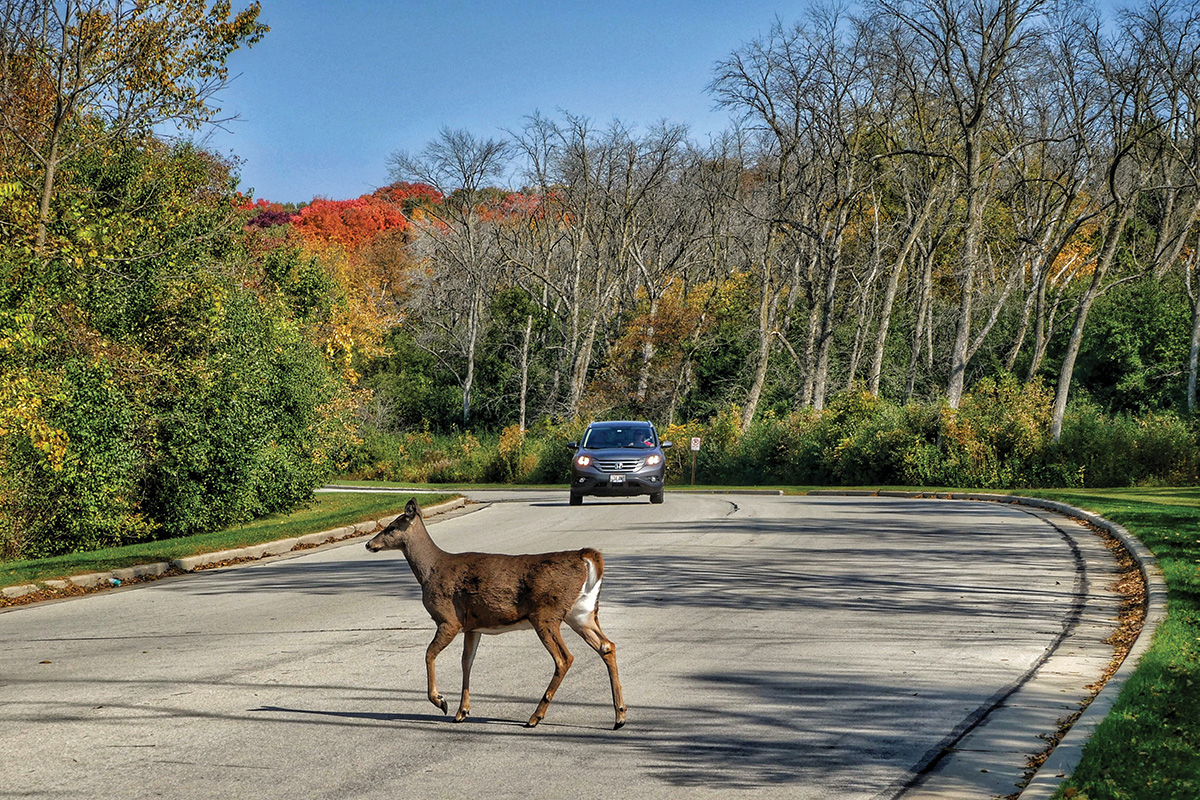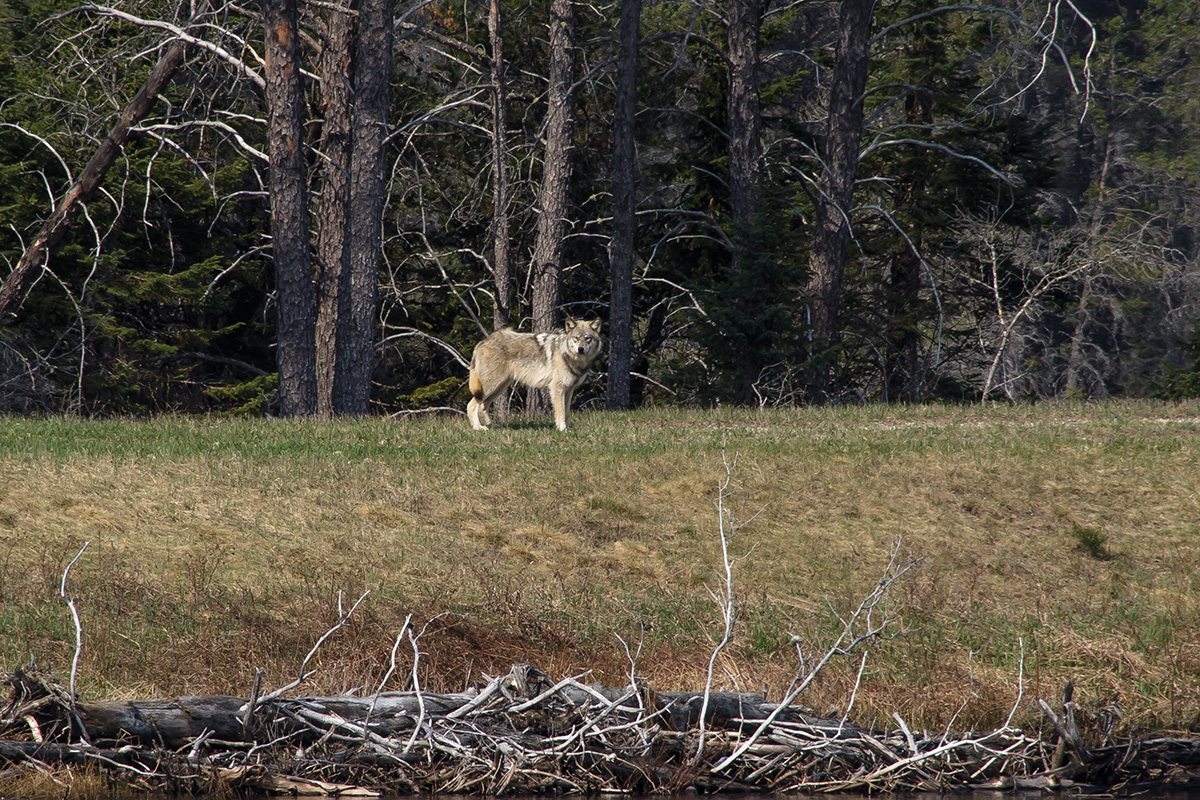By the early 20th century, gray wolves had nearly gone extinct in North America, a decline fueled partly by government-sponsored efforts to control predators. Since the U.S. Fish and Wildlife Service listed the species as endangered in the 1970s, gray wolf numbers have begun to rebound. Wolves are now found in national parks and human-inhabited areas throughout much of the American West, including several midwestern states such as Wisconsin. The recovery story is an obvious win for conservation.
The politics of wolf recovery, however, has tended to come down to a rural-urban divide, with farmers and ranchers lamenting livestock fatalities and environmentalists and outdoor enthusiasts prizing wolves for natural beauty or what’s known as “existence value.” This state of debate turns wolf reintroduction into a zero-sum issue, in which wolf advocates’ gain comes at the expense of the private landowners who bear the costs of wolf recovery.
Economists Jennifer L. Raynor (2021 PERC Lone Mountain Fellow), Corbett A. Grainger (2015 PERC Lone Mountain Fellow), and Dominic P. Parker (PERC Senior Fellow), however, have produced evidence for a hypothesis that offers a new framing for wolf reintroduction. Their study, published in the Proceedings of the National Academies of Sciences in June, focuses on a unique aspect of wolf recovery in Wisconsin: its impact on deer-vehicle collisions. “There’s no question wolves cause economic losses,” Raynor explains, but “they also generate really large economic benefits.” Why? Because they considerably reduce vehicle collisions with deer, a seemingly intractable problem that the study notes is responsible for “29,000 human injuries, 200 human fatalities, and nearly $10 billion in total economic losses” in the United States every year.
What about ranchers and farmers, who fear livestock losses due to predation by wolves? Based on the research team’s findings, Raynor argues that the measurable, concrete economic benefits of wolf recovery—in addition to whatever existence value it creates—greatly outweighs the losses caused by wolf predation, by as much as a factor of 63 to one.
The issue, then, is compensation. “Wolves are generating large economic benefits that can be quantified and potentially transferred,” Raynor says. In many states, ranchers and farmers can already receive compensation for livestock deaths if they can prove a wolf was responsible. But Raynor suggests that, with the right policy, the compensation process could be simplified, and even enhanced, given the overall savings from reduced vehicle collisions. Essentially, it isn’t just wildlife enthusiasts and motorists who would benefit from more wolves—if the policy is right, even farmers and ranchers could benefit, too. Because deer-vehicle collisions are such a widespread problem, they can affect anybody who drives.
How, exactly, are wolves reducing vehicle collisions with deer? Perhaps surprisingly, deer kills by wolves are only a minor driver of the reduction. The bulk of the effect points to a unique ecosystem function of wolves: what ecologists have called a “landscape of fear.” Wolves—like deer—often travel along or near linear, man-made landscape features, including roads. The presence of wolves along roads wards off deer, thereby reducing the likelihood and number of collisions.
“Most of the reduction is due to a behavioral response of deer to wolves, rather than through a deer population decline from wolf predation,” Raynor says. “Wolves control economic damages from overabundant deer in ways that human deer hunters cannot.” It’s a simple but crucial dynamic that points to two realities rarely considered in deer control policy. First, human hunters, because they only operate a few weeks or months per year, cannot produce a long-term “landscape of fear.” Second, deer-vehicle collisions can be slashed without meaningfully reducing the absolute deer population.
The benefits of wolf recovery could be far reaching. Raynor suggests that car insurance providers might reduce rates, and help fund wolf-loss compensation programs, with their own savings. Insurance companies may not care about wolves per se, but they certainly care about collisions. Aligning their incentives with those of the predator could transform the wolf debates from zero-sum arguments into positive-sum opportunities. An increased pool of compensation funding could make whole farmers and ranchers who suffer livestock losses. People who value wolves for recreational or existence value could enjoy them. And deer hunters could still pursue large populations of deer, even with the presence of wolves.
The possibility of linking deer control with wolf conservation is an intriguing one for policymakers to consider, even if the particulars are a question for the future. While these findings are limited to deer in Wisconsin—Raynor notes that their study did not examine other species, such as elk—they are likely to hold true in other states. In any case, to make wolf recovery sustainable, policymakers should make sure that the economic benefits of wolves are enjoyed broadly, including by the farmers and ranchers who have disproportionately borne the costs of living with wolves. If that can be done, groups previously at loggerheads—from ranchers to hunters to motorists to environmentalists—can share in conservation benefits and economic savings alike.





